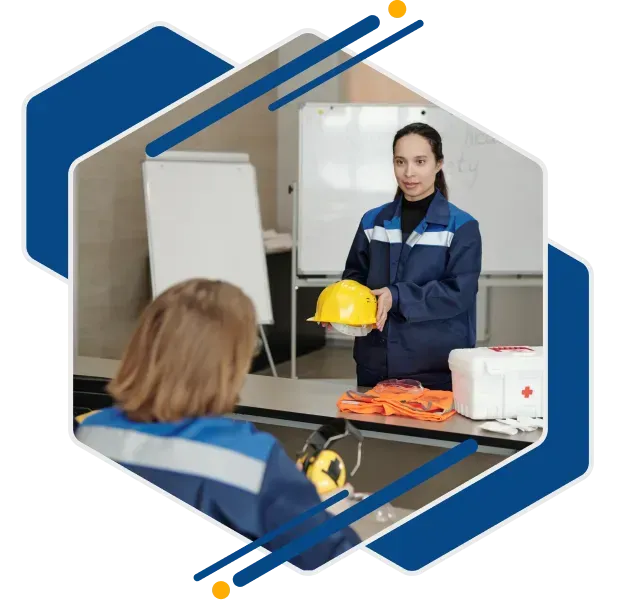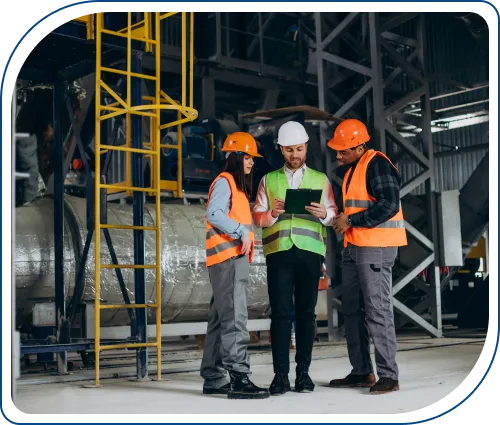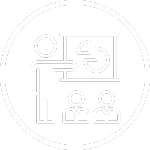Now Offering Spanish Safety Training!

Now Offering Spanish Safety Training!
General Safety
Safety & Health Training Programs for OSHA Compliance
FSDAVCFEBFEVSDDVFSD
FSDAVCFEBFEVSDDVFSD
FSDAVCFEBFEVSDDVFSD
General Safety - Safety & Health Training
The Importance of Developing Safety Training Programs

Safety and health training is essential for maintaining compliance and fostering a safe work environment. These programs educate employees on OSHA regulations, help them recognize potential hazards, and teach proper safety protocols. Effective training reduces accidents, enhances awareness, and promotes consistent safety practices, ultimately contributing to a safer and more productive workplace.
Training programs must be tailored to meet the specific needs of each industry, whether they involve general safety measures or specialized topics like hazard communication. This approach equips employees to handle diverse safety challenges, maintain compliance, and respond effectively to various situations.

Comprehensive Trainings for Workplace Safety and Compliance
Safety and health training is vital for maintaining a compliant and safe work environment. These programs provide employees with the knowledge needed to identify hazards, follow safety protocols, and understand OSHA regulations. Effective training not only enhances awareness but also minimizes accidents by providing clear guidance. Employees learn to adhere to safety standards consistently, improving overall workplace safety and compliance.
Training programs are designed to meet industry-specific needs. They cover general safety measures as well as specialized topics, such as hazard communication, chemical handling, and emergency response. This tailored approach ensures that employees are adequately prepared for different safety challenges. Whether it involves handling hazardous materials or managing emergency situations, the training equips employees to respond effectively, ensuring compliance and safety.
To maintain effectiveness, training programs should be regularly updated with the latest OSHA requirements and evolving industry standards. Incorporating specialized safety protocols into training materials keeps employees informed about new risks. This proactive strategy not only reinforces compliance but also fosters a culture where safety is prioritized, making the workplace safer for everyone.
Tailored Health and Safety Programs for Diverse Business Needs

Safety training programs must be tailored to meet the specific needs of different industries. This customization includes focusing on general safety protocols while also addressing industry-specific risks, such as handling hazardous materials, operating heavy machinery, or managing high-risk environments. By adapting training to fit each industry’s requirements, employees gain a thorough understanding of safety measures that are directly relevant to their roles. This targeted approach enhances employee competence, promotes adherence to safety protocols, and reduces the likelihood of accidents.
In addition to covering general safety topics, effective training also incorporates specific practices for organizing safety efforts. This involves preparing employees to manage real-world safety challenges, such as emergency response, hazard identification, and risk mitigation. By including practical, scenario-based training, employees become better equipped to apply safety measures consistently, making them more confident and proactive in maintaining workplace safety.

Safety training not only equips employees with essential safety skills but also boosts their confidence in managing workplace risks. Well-trained employees are more likely to consistently apply safety protocols, which helps minimize accidents and improve overall safety performance. By understanding and practicing the required safety measures, employees can respond more effectively to potential hazards, contributing to a safer work environment. This level of preparedness fosters a proactive safety culture that reduces risks and maintains compliance.
Incorporating comprehensive training into the workplace also builds trust among employees, making them feel valued and protected. When staff members recognize the company’s commitment to their safety through effective training programs, it enhances their sense of security. This positive environment encourages engagement, morale, and productivity. A workforce that feels supported is more motivated to uphold safety standards, creating a sustainable, safety-focused culture across the organization.
Frequently Asked Questions
Frequently Asked Questions
What is Safety & Health Training, and why is it essential for my employees?
Safety & Health Training is a program designed to educate your employees about workplace hazards and safe practices specific to their job roles. This training is crucial as it not only ensures that employees are aware of how to perform their jobs safely, but it also complies with OSHA requirements, helping to prevent workplace injuries and enhance overall safety.
How is the training program tailored to the specific needs of my business?
Nain and Associates works closely with your business to understand the specific hazards present in your facility and the nature of the work performed by your employees. Based on this assessment, they develop a customized training program that addresses the unique safety needs and requirements of your employees and workplace.
What kind of hazards does the training program cover?
The program covers a wide range of potential hazards that are relevant to your specific business environment. This can include, but is not limited to, chemical, mechanical, electrical, ergonomic, and environmental hazards, as well as general safety practices and emergency procedures.
How long does the Safety & Health Training take, and what format is it delivered in?
The duration of the training depends on the complexity and scope of the required safety topics. Nain and Associates will provide an estimated timeframe based on your business needs. The training can be delivered in various formats, including in-person sessions, workshops, and possibly digital or online modules, depending on what best suits your company's requirements.
Will this training help my business comply with OSHA regulations?
Yes, the training is designed not only to educate your employees about safe work practices but also to ensure that your business complies with relevant OSHA regulations. It helps in reducing the risk of violations and penalties by keeping your workforce informed and aware of safety standards and practices.
Strategies for More Engaging Health and Safety Training
Safety and health training should use effective strategies to enhance compliance and safety outcomes. Clear communication, hands-on sessions, and regular updates are vital. These strategies help employees understand protocols and apply them consistently, reducing workplace risks and hazards.The training we provide is engaging and always involves real-life scenarios. This method helps your employees retain the knowledge and apply it effectively during emergencies or high-risk situations. Regular evaluations allow for swift adjustments to the training, ensuring it remains relevant and effective over time.
Customized training programs are crucial for addressing industry-specific safety needs. Tailoring the safety documentation to fit each industry ensures that all employees understand and manage the specific risks they may face. This combination of personalization and practicality encourages employees to integrate safety measures into their daily routines.


Implementing safety and health training programs not only promotes compliance but also helps build a strong safety culture throughout the organization. When employees understand and appreciate safety practices, they are more likely to consistently follow protocols, reducing the risk of accidents and injuries. This proactive approach not only reinforces adherence to regulations but also fosters a safer, more sustainable work environment where safety becomes a shared responsibility among all team members.
Building a Strong Safety Culture with Practical Trainings
Establishing a strong safety culture requires consistent, well-designed training programs. These programs should engage employees, motivate them, and empower them to take an active role in safety measures. Emphasizing safety as a shared responsibility encourages employees to identify and report potential hazards. This level of involvement not only increases accountability but also maintains compliance with OSHA standards, resulting in a safer and more cohesive work environment. Incorporating workplace safety training in Raleigh helps reinforce this approach and ensures employees understand local compliance needs.
Effective training programs also involve regular assessments to gauge employee understanding and performance in implementing safety protocols. Evaluating areas of strength and identifying weaknesses allows organizations to address gaps effectively. Integrating regular feedback into training sessions enhances learning outcomes, ensuring employees are continuously improving their safety skills. This ongoing process keeps safety measures relevant and aligned with current regulations, promoting long-term compliance.
Training programs should adapt to new safety developments and emerging risks. This includes training on new equipment, updated OSHA regulations, and industry-specific hazards. Employees must be prepared to respond to these changes swiftly and effectively. Consulting with our experts for safety program development can provide valuable insights and ensure that training remains comprehensive. This proactive approach supports a sustainable safety culture and enhances employee confidence.
Have Questions About Our Services?
Contact us to learn more today!
Have Questions About Our Services?
Contact us to learn more today!
Design By: Customers.Plus
© 2025 | Nain & Associates LLC





